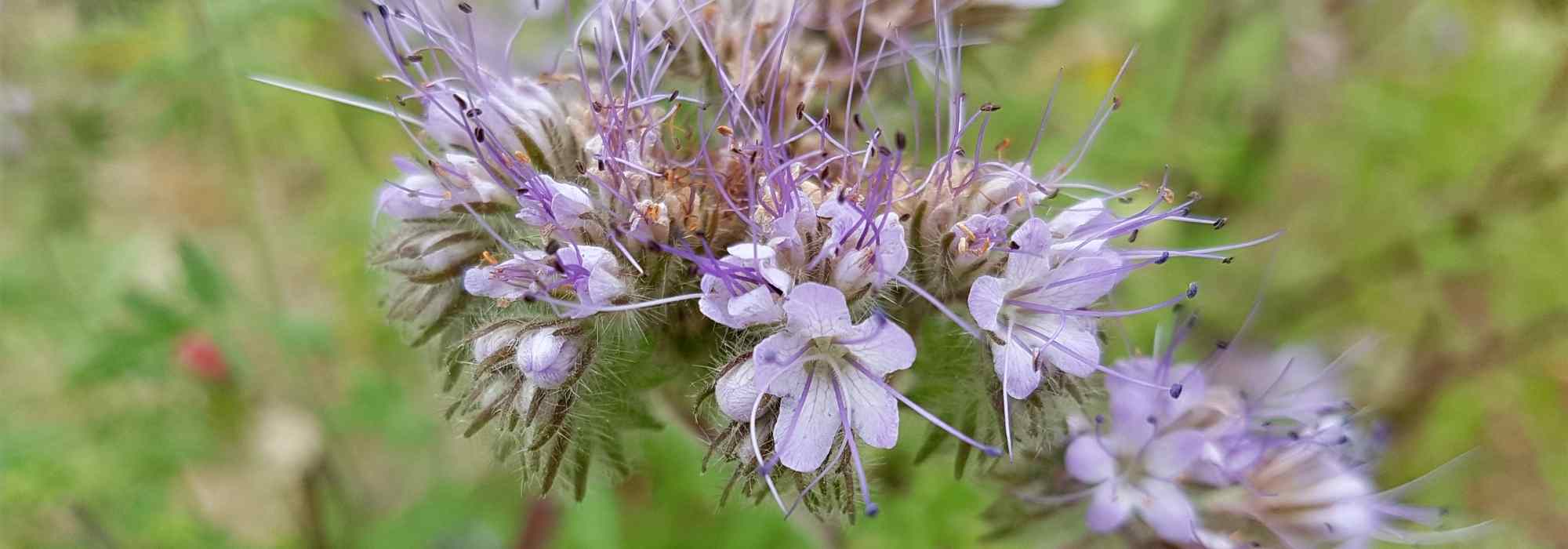
Phacelia: sowing, growing
Contents
Phacelia in a nutshell
- Phacelia is a green manure that fertilises the soil for the following crop and suppresses “weeds”
- It aerates the soil and prevents leaching of the land during heavy rains
- It is an annual plant that provides ground cover as part of an intelligent crop rotation
- Particularly melliferous and nectariferous, its flowering is highly appreciated by pollinators
- Phacelia is very versatile; it is suitable for all types of soil: it can be mowed before seed set to be incorporated by shallow digging or used as mulch
A word from our expert
Phacelia –Phacelia tanacetifolia– is an annual plant that is beneficial in the vegetable garden for many reasons! This lovely plant, with its delicate blue flowering, has become essential in ecological gardening. Alongside White Mustard, Clover, and Buckwheat, it is part of the green fertilisers that are indispensable. Although not edible, it has numerous benefits: it enriches the soil by providing necessary nitrogen and, thanks to its dense root system, it loosens the soil while preventing the establishment of adventive plants. It has the ability to protect the soil from the impact of rain. Additionally, in borders or natural meadows, it attracts pollinating insects, benefiting nearby plants!
Very pretty and fragrant, the flowering of Phacelia occurs from May to August, in the form of lavender-blue inflorescences curling like a crozier.
Very easy to grow, it is sown in spring in uncultivated plots, mown before seed formation to incorporate it into the soil or left in place as mulch.
In the organic vegetable garden and garden, discover how to sow, grow, and use phacelia!
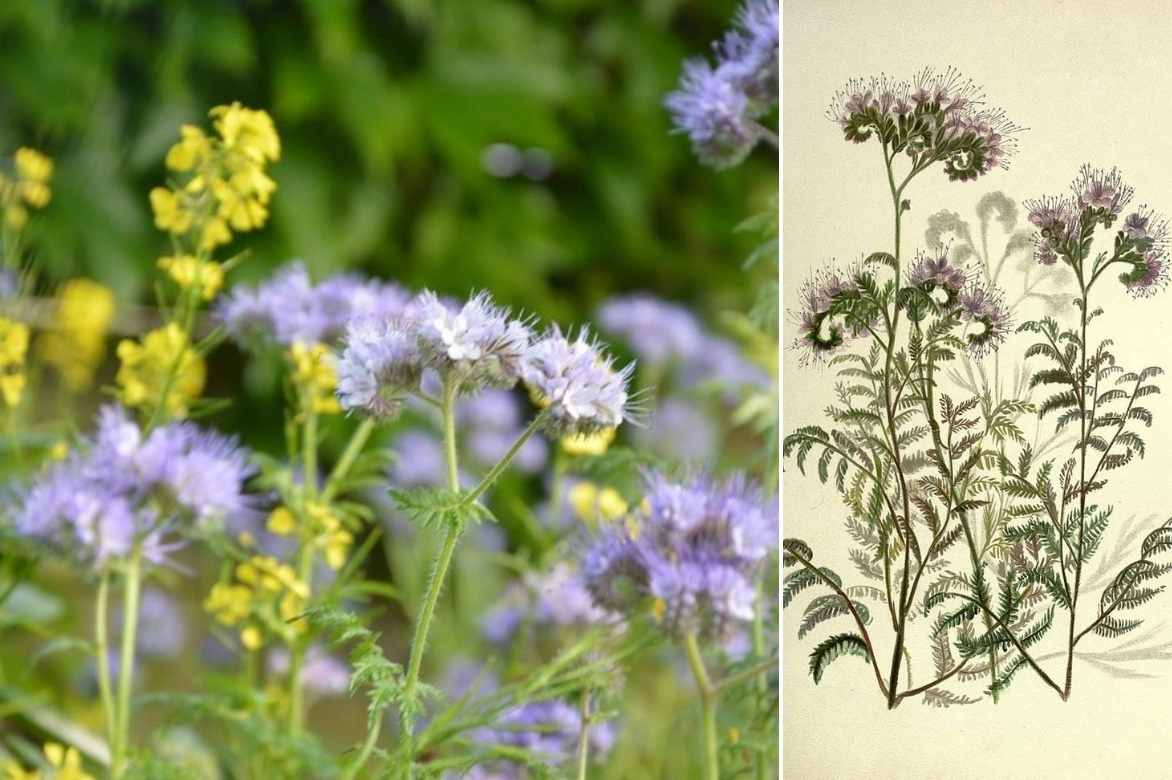
Phacelia, flowers (Photo: K. Berckmoes), and botanical plate from 1887 by E.H. Thayer
Description and botany
Botanical data
- Latin name Phacelia tanacetifolia
- Family Boraginaceae
- Common name Phacelia, Tansy-leaved Phacelia
- Flowering May to August
- Height 0.30 to 1.20 m
- Exposure Sun
- Soil type All
- Hardiness Frost-sensitive
Phacelia, in Latin Phacelia, is one of those plants known as “green manures”. The genus Phacelia comprises around 150 species of annual, biennial, or perennial plants, but in our gardens, we only cultivate the annual phacelia or Tansy-leaved Phacelia (Phacelia tanacetifolia).
This annual herbaceous plant, belonging to the botanical family Boraginaceae and native to North America, develops a well-developed, dense, and deep root system, which is very useful for aerating and loosening the soil, as well as fixing and returning nitrogen to the soil, a nutrient essential for plants. With very rapid growth, it quickly forms a dense clump, sometimes reaching up to 1 m in height: phacelia rapidly colonises large areas to prevent weeds from growing.
It has a very sculptural upright habit with its rigid, slightly reddish stems covered in hairs. The elegant, deciduous foliage is soft and finely divided, reminiscent of that of tansy or certain ferns. It consists of large, alternate green leaves, about twenty centimetres long, oblong, lobed, and well-spaced along the stems.
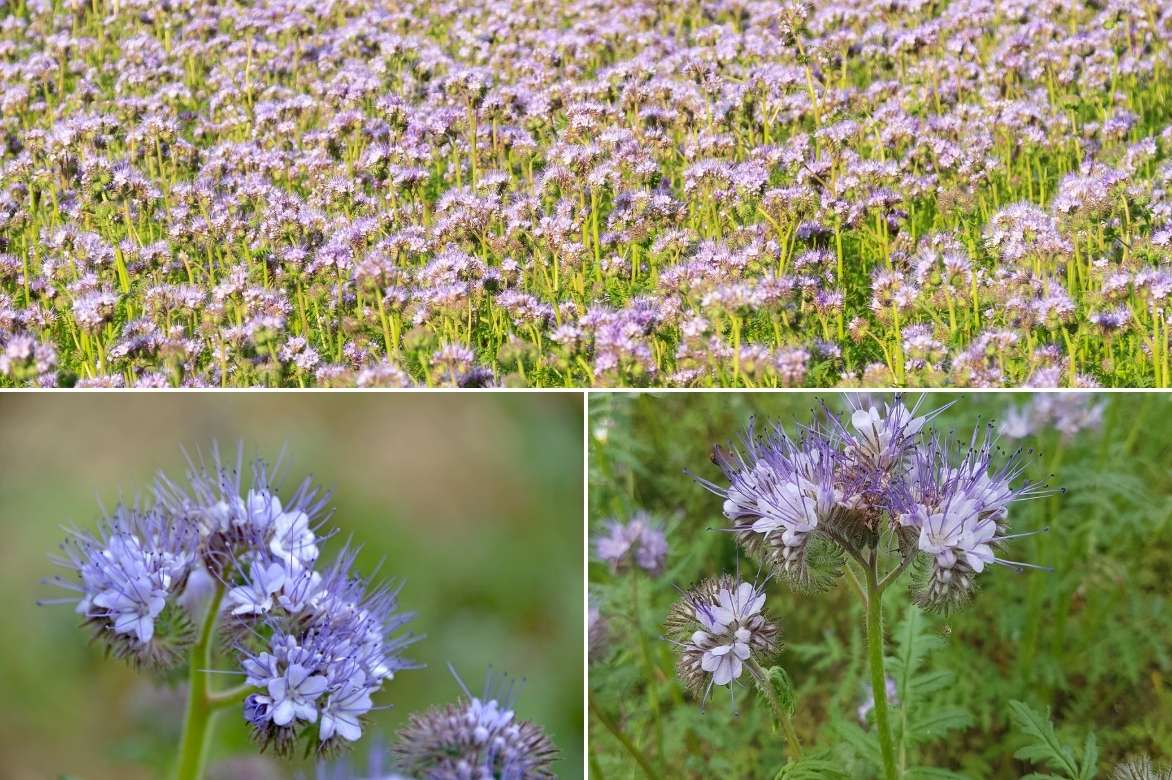
Field of phacelia, inflorescence and foliage
On this finely divided vegetation, flowering occurs from May to August. Grouped in cymes, the inflorescences in the shape of a crozier gradually unfold as flowering progresses. They reveal small, fragrant flowers about 1 cm in size, formed of 5 petals in shades of blue mauve to lavender blue. These small inflorescences, encased in a narrow calyx with hairy sepals, release a bouquet of long stamens.
This fragrant, melliferous, and nectariferous flowering lasts about 6 weeks. It attracts pollinators throughout the summer, particularly bees and butterflies, as well as other beneficial insects like hoverflies, bombyliids, and ladybirds, which are excellent predators of aphids and scale insects.
The fruits are small dehiscent capsules containing 4 seeds: the plant can become invasive through spontaneous sowing.
In the garden, phacelia is a sovereign plant: it is essential in the context of an ecological garden or permaculture. This green manure is appreciated for its ability to aerate and fertilise soils, limit weeds, its melliferous qualities which are very useful in the vegetable garden and orchard, and also for its beautiful rustic appearance. It primarily serves as an intermediate crop, which is why it is particularly useful in a crop rotation vegetable garden to allow the soil to rest and regenerate from year to year.
Read also
Green manures: why, how?Main species
Discover other Phacelia
View all →Available in 3 sizes
Sowing of phacelia
Where to sow?
Phacelia is a frost-sensitive plant, so it is grown as an annual in the garden. Easy to cultivate, it thrives in all soils, even the most ungrateful and driest. In terms of exposure, it prefers full sun.
It is sown as a green manure in crop rotation in the vegetable garden on an uncultivated plot or between rows of vegetables. It can also be grown in areas where you wish to limit grass growth or eliminate “weeds.”
Highly melliferous, Phacelia is also very useful in orchards. It is an aesthetically pleasing and fragrant plant that can be sown in a naturalistic garden mixed with other annual flowers, in wildflower beds, or in natural meadows, where it will attract pollinators.
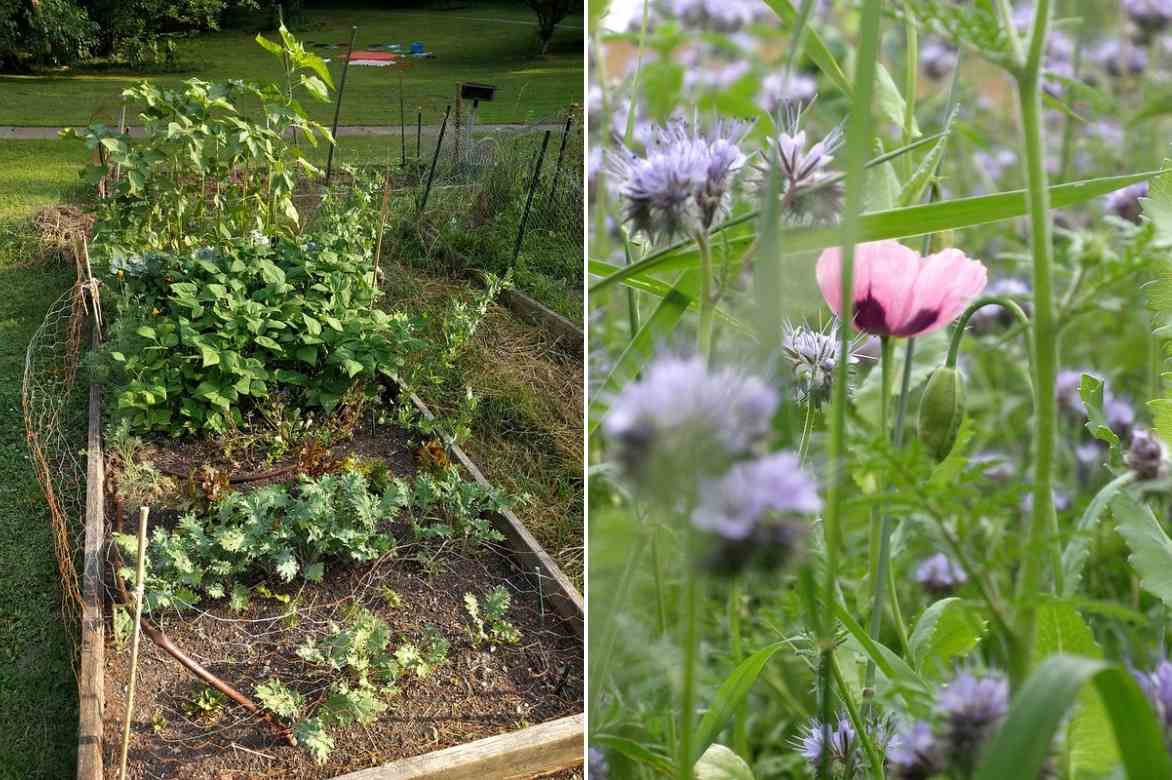
Phacelia has its place in the vegetable garden, here as a second crop (Photo: N. Doty), but also in naturalistic gardens or meadows (Photo: A. Slater)
Why Sow It?
Phacelia is beneficial to the vegetable garden in several ways. Thanks to its dense root network, it loosens the soil, improves its texture, enriches it with nitrogen, and suppresses adventive plants. It forms a plant cover that protects loamy and sandy soils from leaching during heavy rainfall.
It stores residual nitrogen in its tissues. Once mowed, shredded, and buried in the soil, it decomposes gradually, making it particularly valuable for enriching poor soils. Green manures like phacelia are primarily used in the vegetable garden, but you can also use them in poor, degraded, or overly compacted soil before planting a large bed or hedge, for example.
In soils that are not too clayey, planting phacelia allows for gardening without the need to dig. In the vegetable garden, it is ideal for preparing the soil and allows the earth to rest between crops.
It can also be used as a melliferous plant. Its nectar-rich and pollen-producing flowering occurs from spring to late summer, naturally attracting pollinators.
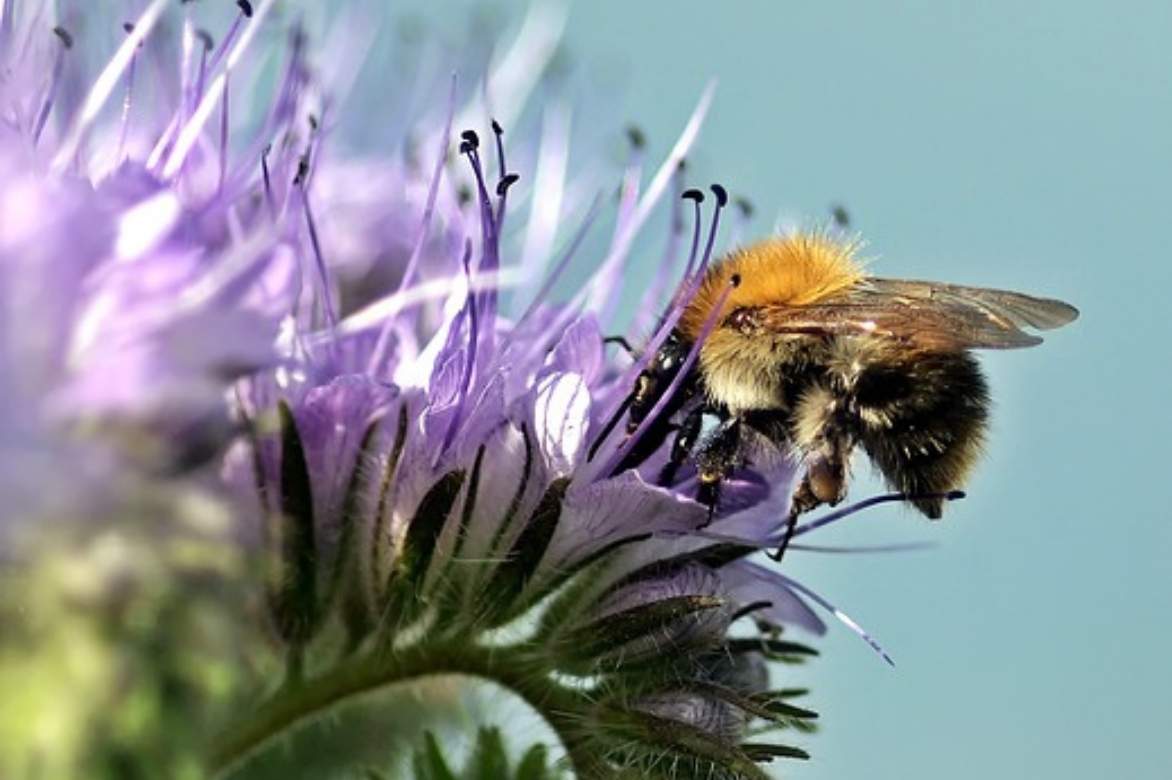
The flowers of Phacelia tanacetifolia attract many foraging insects
When to sow phacelia seeds?
The phacelia seeds are sown from spring, starting in March until July when it is warm enough, between 10 and 25 °C. It remains in place for at least 3 months and should be mowed before flowering. You can also perform a late sowing in September. In mild regions, this autumn sowing will cover the soil throughout the winter and produce plants that will flower in spring.
How to sow?
This green manure requires a previously weeded soil, quickly loosened with a spade to a depth of 2 to 5 cm, and roughly raked.
- Sow by broadcasting, respecting a quantity of 1 to 2 g per m²,
- To ensure even distribution, you can mix the seeds with fine sand,
- Cover with very little soil,
- Firm down with a rake and then water gently until germination, which usually takes between 7 and 10 days.
Read also
When and how to sow green manures?Maintenance and cultivation of phacelia
Keep the soil moist throughout the germination period. After that, watering will only be necessary when the soil is dry, especially during dry spells.
It is not known to suffer from any diseases.
Cut the phacelia approximately four months after sowing. It is better to cut it before it goes to seed, as it can become invasive through self-seeding. Once cut, you can incorporate it into the soil through shallow digging (about 10 cm deep), add it to the compost, or leave it in place as mulch: as it breaks down, the mulch enriches the soil with organic matter, rich in nutrients. You can also shred it by mowing.
You can also allow the plants to seed in place to benefit from self-seeding or to collect seeds. Alternatively, you can simply pull it up: you will instantly have well-aerated soil, ideal for planting your vegetables.
It easily associates with other green manures such as white or purple clover.
Multiplication
Phacelia is propagated solely by sowing. Seeds harvested from the garden will retain their seed viability for about 4 years.
Useful resources
- Green fertilisers, have you heard of them? Discover more in our guide!
- Subscribe!
- Contents
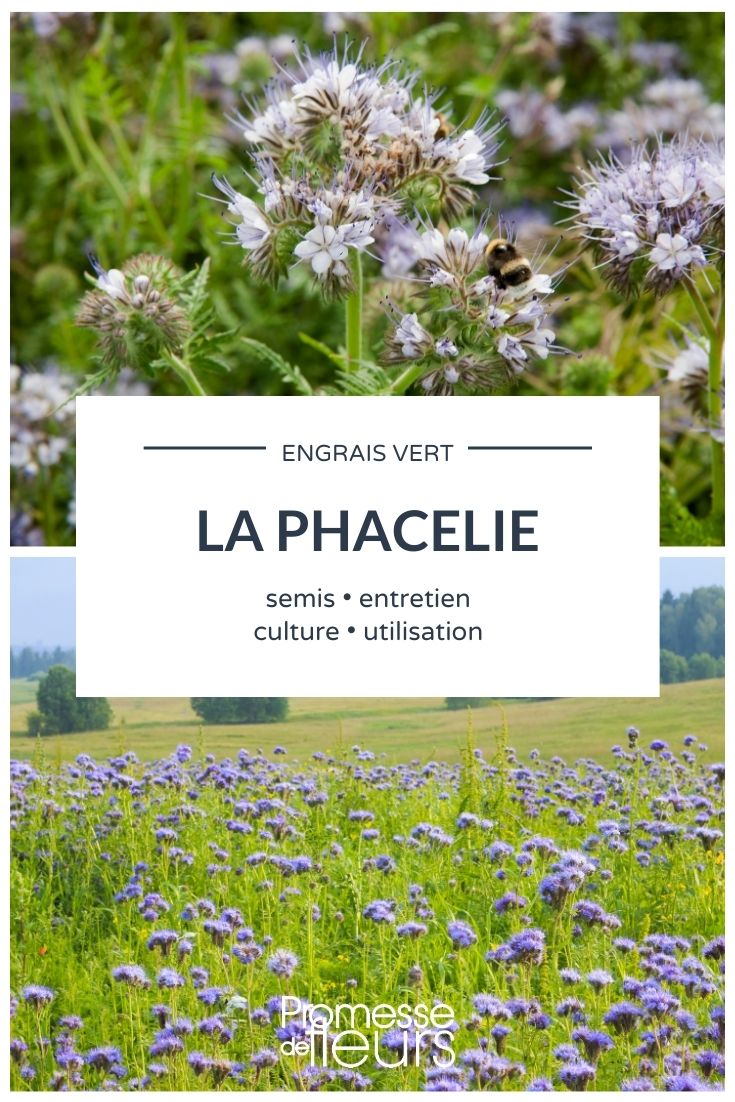































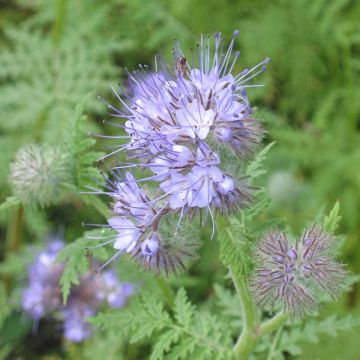
Comments